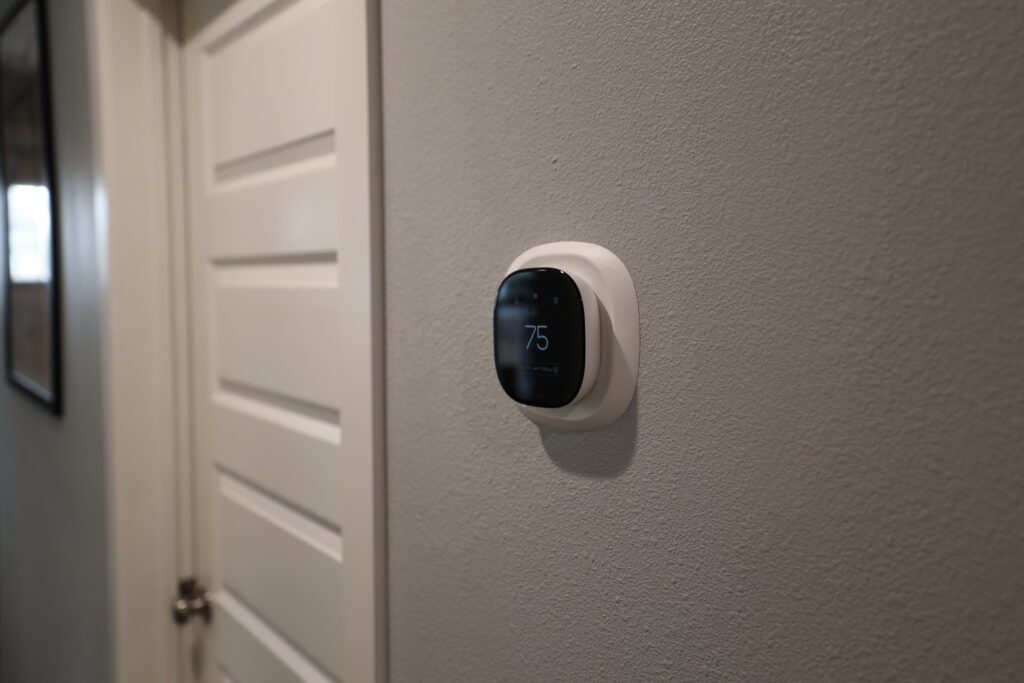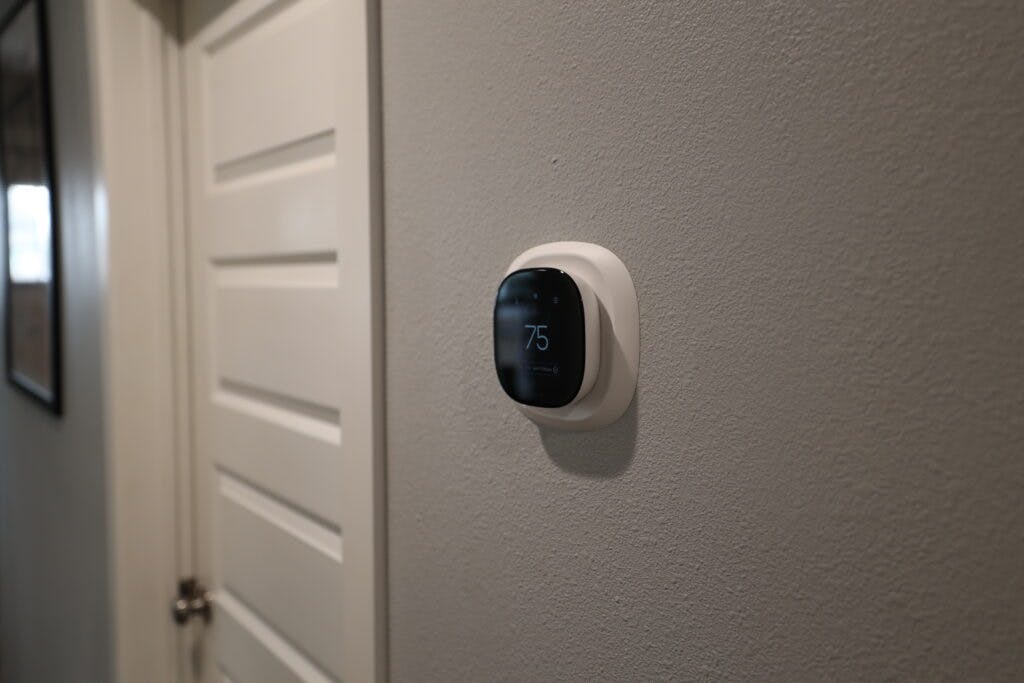Why Does My Ecobee Keep Rebooting or Restarting?
By Trae Jacobs,
When you buy through our links, we may earn an affiliate commission.
There are many things to love about the Ecobee smart thermostat, but it can be difficult for its users to enjoy if it keeps rebooting at random times.
There are three reasons why an Ecobee thermostat may be rebooting often:
- The wiring to the thermostat is damaged, loose, or installed incorrectly.
- The furnace is overheating.
- The HVAC unit needs to be cleaned or serviced.
Your Ecobee rebooting every once in a while may not seem like a big deal, but it can become inconvenient if it keeps happening. Also, it may be a sign of a more serious, underlying problem. That’s why in this article, we have provided troubleshooting tips to help you fix this issue.
Why Is My Ecobee Rebooting?
Because there are different reasons why your Ecobee smart thermostat may be rebooting, there are different troubleshooting tips you can try for each potential cause of the problem. Each cause and corresponding solution are detailed in the paragraphs below.
Problem with the Wiring
Ecobee thermostats need a continuous 24 volt A/C power supply to operate. The thermostat is powered by the R wire, which is usually red, and the C wire, which is usually blue or black.
Both the R and C wires must be correctly connected to both the back of the thermostat and the HVAC control board or the Ecobee Power Extender Kit.
In the table below, we’ve listed potential wiring issues that could disrupt the flow of continuous power between the thermostat and HVAC system. Solutions are provided for each wiring problem.
Safety Note: It’s imperative to turn off power to your HVAC system at the breaker box before handling any wires.
| Problem | Solution |
| Wires are not tightly connected to their terminals. | Disconnect and reconnect the wires to the back of the thermostat to ensure they are secure. The tab next to the terminal should be fully pressed down to indicate the wire is fully connected. |
| Wires are spliced improperly. | Improperly spliced wires not only disrupt the power supply, but they can also be a fire hazard. Hire an electrician to install new wiring if you notice any open wire splices. |
| Wires are corroded. | Detach the wire from its terminal first. Then, scrub it with a wire brush. If that doesn’t remove all the corrosion, mix three tablespoons of baking soda in a cup of warm water. Rub it onto the wire using a toothbrush. It will fizz. When it stops fizzing, the corrosion should be gone. |
Furnace Is Overheating
All furnaces have an automatic shut-off feature if the internal temperature gets too hot; this is to prevent potential fires. Some HVAC systems may turn off the power to the thermostat when the furnace temperature sensor is triggered; this will cause the thermostat to reboot as the connection to the HVAC system is temporarily lost and then restored.
Furnace overheating tends to happen more often in cold winter months when the furnace has to work extra hard to maintain your desired temperature in the home. To minimize the potential for overheating, turn down your heat set point a few degrees. Also, try not to run the heat for long periods.
If your furnace is overheating, but it isn’t overworked, it may just need to be cleaned. The most common cause of a furnace overheating is dirty filters. The air filter(s) on your furnace needs regular maintenance, but this is easy to do yourself:
- Check the filter(s) at least every three months to make sure they are not clogged.
- If they are dirty, clean them with water and let them dry completely before returning them to the furnace.
- Replace the filter(s) with new ones after 6-12 months of use.
HVAC Unit Needs Servicing
While the air filters can be changed easily by anyone, if there is dirt or build-up on other parts of your furnace or air conditioner, you will want to hire an HVAC technician to do a check-up and deep clean.
To determine if you should call a technician, you can look inside the furnace for any build-up. Any excessive dirt or build-up on the various parts of the furnace may cause overheating. The condensing coil and heat exchanger are two parts that often get dirty.
In an air conditioner, excess water build-up from condensation may cause the unit to turn off and reboot the thermostat. You can empty and clean the drain pan to prevent more water build-up. You will also want to check for any clogs in the drainpipe and clear them.
Are you experiencing other issues with your Ecobee, such as the device not turning your fan off or on? Check out some of our other Ecobee troubleshooting articles!
Related Questions
- What is the Recommended Minimum Fan Runtime for Ecobee?
The minimum fan run time for the Ecobee Thermostat depends on what environment you live in and what temperature you prefer to keep your house at. However, the recommended time to run the Ecobee Thermostat is between five and 20 minutes. - Getting the Most Out of Ecobee Sensors
You can pair up to 32 room sensors to your entire ecobee system and place them wherever you need them to be. - How Long Do Ecobee Sensors Stay Occupied?
In Follow Me mode, Ecobee sensors stay occupied for 30 minutes. When no motion is detected for more than 30 minutes, the sensor will become unoccupied. In Smart Home and Smart Away modes, occupancy is measured every five minutes and lasts two hours. - Why Is My Ecobee Sensor Temperature Wrong?
If your Ecobee sensor is not displaying the correct temperature, it is likely that it either needs to be recalibrated, is not properly placed, or needs to have the batteries replaced in the device. You can check the status of the sensor from your thermostat or accompanying smartphone app.

